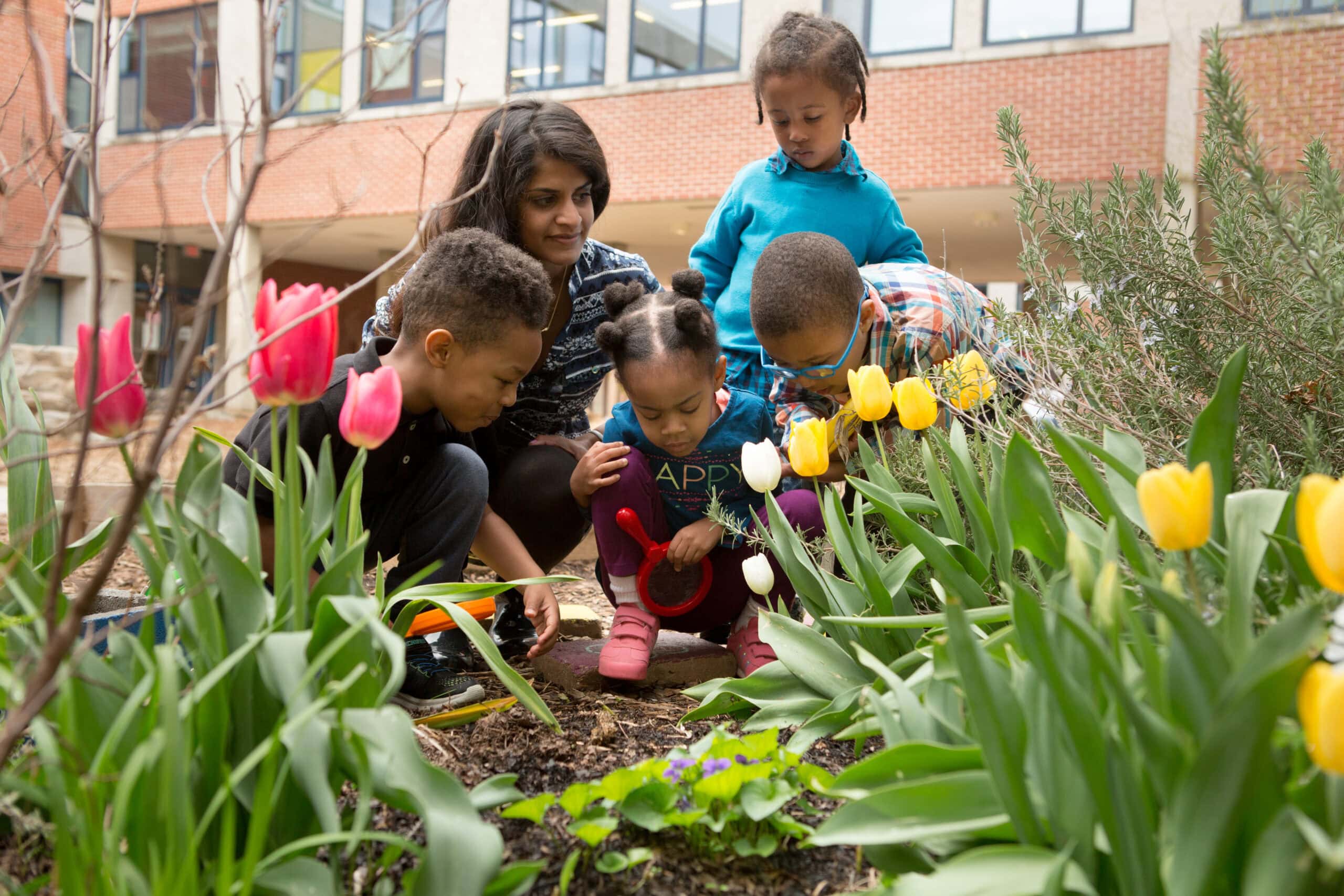
Preserving the Human Connection in the Age of GenAI in Schools
Relationships are crucial for healthy development and learning
It’s cropping up everywhere: at academic conferences, school board meetings and neighborhood gatherings, people are talking about the rise of artificial intelligence and its impact on students.
Generative artificial intelligence (GenAI) holds promise for improving teaching and learning. It can reduce administrative burdens on teachers, provide supplemental tutoring, enhance teacher professional learning, and guide students’ decisions about college and careers. But as educators and policymakers explore opportunities to leverage GenAI in schools and classrooms, it’s essential that they keep in mind a critical feature of our current model for delivering instruction—the relationships among adults and children that are crucial for fostering healthy development and learning.
When people reflect on what shaped their school experiences, relationships—with trusted teachers, other caring adults, or supportive peers—often top the list. This isn’t just anecdotal. Decades of research affirm that strong student-teacher and peer relationships are essential to academic success, social development, and emotional well-being. They are also central to ensuring that students are motivated to learn.
Students who develop strong relationships with adults in school are more likely than their less-connected peers to experience a sense of belonging, which in turn leads to beneficial academic and social outcomes in both the short and longer terms. The need for human connection is reinforced by evidence of increasing youth mental health challenges and potential harms linked to time spent online.
Can AI Replace Teachers?
While GenAI itself doesn’t inherently undermine relationships, some of its proposed applications raise concerns. For instance, one CEO said recently that GenAI could outperform human teachers, but schools would continue “because you still need childcare”—an argument that underestimates the vital human element in learning. Duolingo and other companies are increasingly building chatbots that can mimic human emotions, and interactions with chatbots that are designed to act like humans are also increasingly prevalent outside the classroom.
Tools that mimic human interaction can be helpful for promoting engagement in learning activities, and the kinds of advances Duolingo and other educational companies are making in this area are promising. However, as others have noted, some GenAI-enabled applications have the potential to displace activities that bring educators and learners together.
We’re right to be concerned about the potential for reduced human interaction in education. We’ve seen the harm that can come from other tech-driven shifts, such as remote learning during the COVID-19 pandemic. Earlier waves of ed tech adoption in classrooms have sparked fears that technology might displace social interactions, even as most teachers continued to use technology to supplement their instruction rather than to replace themselves.
High-quality relationships don’t emerge by default—they’re cultivated with intention. As teachers and education leaders integrate GenAI into classrooms, they must take proactive steps to protect and strengthen the relational core of education. Here are four key strategies:
- Keep educators in the lead. Other guidance on the use of AI in education has emphasized the importance of “humans in the loop.” I propose we go further: educators shouldn’t just be looped in. They should be responsible for determining how classrooms and schools are organized and how instructional tools and materials are used. Educators recognize the value of relationships and collaboration and are best positioned to choose tools and practices that enhance, rather than replace, the interpersonal aspects of learning.
- Gather real-time input. Education leaders can use short, low-burden surveys and check-ins to understand how GenAI tools are affecting both teachers and students—not just in terms of academic content, but in how they feel about learning, their sense of belonging, and their connection to others. Involving students in decisions about how GenAI is used—both in school and beyond—promotes agency, fosters engagement, and helps them develop critical thinking skills they’ll need in a tech-driven world.
- Beware narrow definitions of “engagement.” Student engagement in instructional activities is an important predictor of learning. In the ed tech world, “engagement” often refers to the intensity of students’ interactions with software and is measured through methods such as documenting the amount of time students spend on the platform or tracking their mouse clicks. But engagement with technology is different from engagement with the content being taught, the broader learning environment, and the other people who help you learn. Reliance on digital engagement provides an incomplete picture. Efforts to monitor engagement should incorporate information about the other ways in which students interact with content, teachers, and peers.
- Involve families. Parents and other caregivers want their students to be prepared for future education and employment opportunities, and many recognize that GenAI has the potential to support this preparation while also posing risks. Keeping them informed and inviting their perspectives on AI use in schools builds trust and provides a valuable source of input to inform decisions about whether, when, and how to use these tools.
There is no doubt that GenAI is becoming increasingly human-like, and developers have created tools that they claim can serve not just as educators but as therapists, friends, and romantic partners. But does interacting with these tools foster the sense of belonging and connectedness that is crucial for healthy development? And are we willing to risk the well-being of our young people on vendors’ untested claims?
As we explore what GenAI can do, let’s not forget what only humans can do—build trust, spark inspiration, and offer empathy. Technology may enhance education, but relationships are what make it work. And what make it matter.
Photo by Allison Shelley/The Verbatim Agency for EDUimages
